Shooting
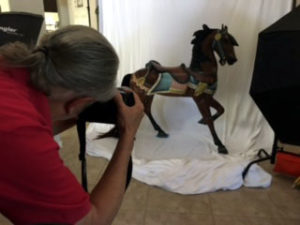 The journey continues. We’ve passed though much desert, and some high country with tall lodge pole pine trees. We are now in Kingman, Arizona.
The journey continues. We’ve passed though much desert, and some high country with tall lodge pole pine trees. We are now in Kingman, Arizona.
This is our third stop, visiting with individuals who have a long term interest, fascination with carousels, with the artistry and history of carousel animals. My host and guide, for this trip is a good friend and photographer. His purpose for the drive out 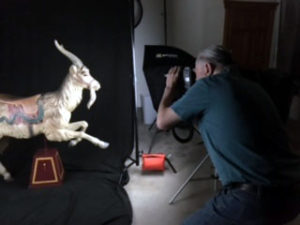 west is to photograph carousel animals. These animals were produced by artisan wood carvers, and painters in the late 19th and early 20th century. Amusement parks began to pass in the late 1950s as society changed. Many of the carousels were destroyed by fire, and many were disassembled as the amusement parks went out of business. The riding animals suffered the consequence of all things that are abandoned due to rapid change. Some were preserved, and still are coming to light
west is to photograph carousel animals. These animals were produced by artisan wood carvers, and painters in the late 19th and early 20th century. Amusement parks began to pass in the late 1950s as society changed. Many of the carousels were destroyed by fire, and many were disassembled as the amusement parks went out of business. The riding animals suffered the consequence of all things that are abandoned due to rapid change. Some were preserved, and still are coming to light 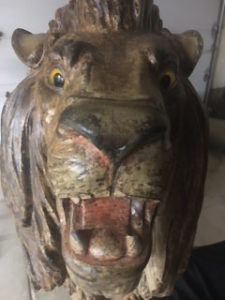 as a few are found in barns, basements, and such out of the way places. Many have been repaired, some restored to original paint, prized by collectors, and some find a home in prestigious museums. The Smithsonian, and the Metropolitan Museum of Art are such storied institutions.
as a few are found in barns, basements, and such out of the way places. Many have been repaired, some restored to original paint, prized by collectors, and some find a home in prestigious museums. The Smithsonian, and the Metropolitan Museum of Art are such storied institutions.
I remember my first rides on a carousel, grasping the pole, held by my father, — how thrilling the sounds, smells, and sensation of movement… Carousel animals 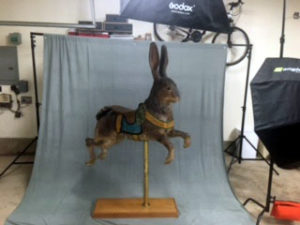 are a priceless icon of our common life as Americans, representing the immigrant experience of artisan carvers, memories of delight that were imprinted into the minds of countless of us growing up in the mid 20th century.
are a priceless icon of our common life as Americans, representing the immigrant experience of artisan carvers, memories of delight that were imprinted into the minds of countless of us growing up in the mid 20th century.
How does one shoot a carousel animal?
This is how it is done…
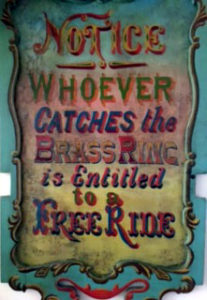 A carousel related item that I saw was this sign that was originally displayed in a bygone amusement park. The words are an enduring testimony to the role played by whimsy, by the imagination in the development of self aware and productive adult citizens. Everyone should believe that he/she will catch the brass ring, and the best part of life is the part that is free…
A carousel related item that I saw was this sign that was originally displayed in a bygone amusement park. The words are an enduring testimony to the role played by whimsy, by the imagination in the development of self aware and productive adult citizens. Everyone should believe that he/she will catch the brass ring, and the best part of life is the part that is free…